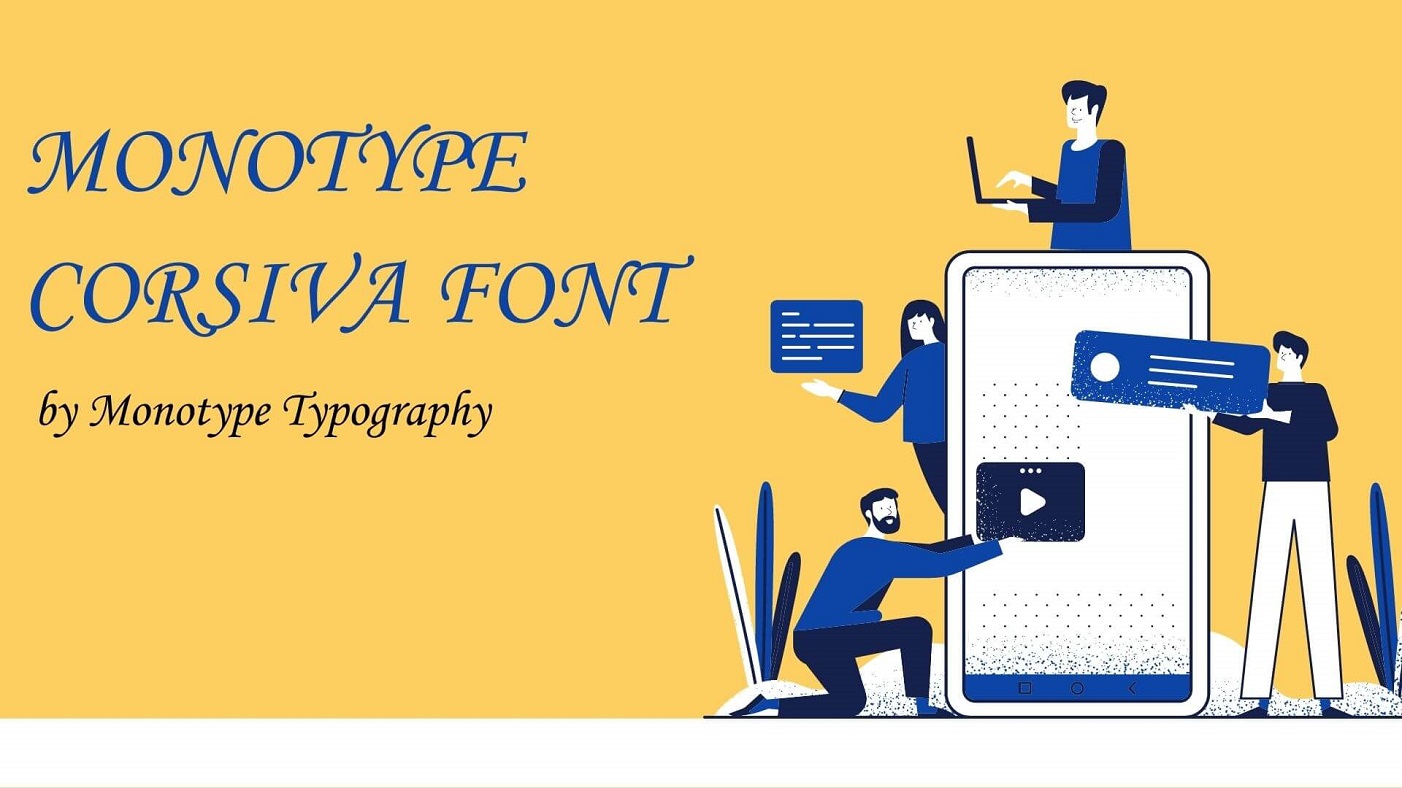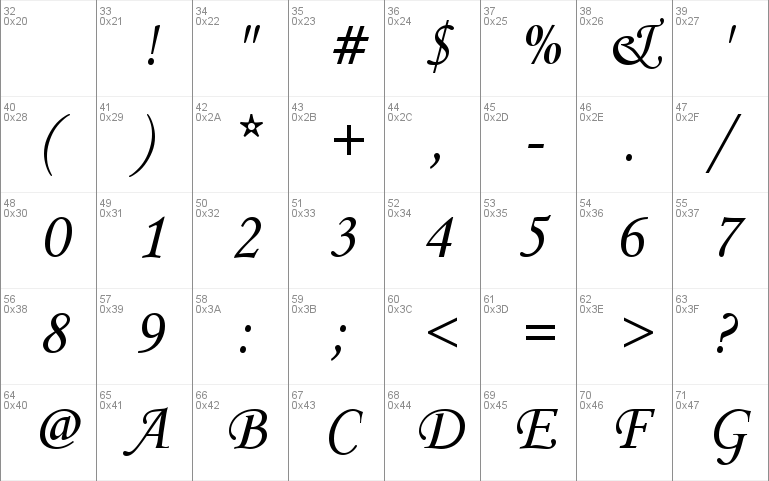

- #Font face monotype corsiva serial
- #Font face monotype corsiva manual
- #Font face monotype corsiva archive
The widest letter in the alphabet, usually the capital "W", was measured in quarter- pica points, a unit being 1⁄ 18 part of this width. The width of the hot-lead Monotype type is expressed in units of a set.

The machine had to be reconfigured for each different type requirement. For the even larger sizes of 42, 48, 60 and 72 point another type cast was used. There were moulds with inserts for sizes 14 to 36 point. After conversion it could also be used to cast any material needed in print shops, including reglettes, ornaments, and similar designs, as well as characters up to 72 points. Another machine was the "super-caster" or "supra", which could cast single type. Type for hand-composing was also cast with Monotype machines all characters up to 36pt, and rules, could be cast on a large-composition machine. The lines did not to be recast, as with Linotype machines.Ī Monotype matrix case for large composition Correction of the final composition was accomplished by simply replacing the moveable type. A composition-caster needed the ribbons of at least three separate keyboards.
#Font face monotype corsiva manual
Typing the texts on keyboards was manual work that took much more time than casting. These ending machines were controlled with a paper ribbon. The machine provided filled lines, justifying them by adding spaces of varying widths. The composition-caster machines of The Monotype Corporation produced ready-to-use composed pages with text consisting of single pieces of type. For these countries many non-Latin typefaces were created for printing in Hebrew, Javanese, Sanskrit, Sinhala, Thai, and other languages. in Salfords, had many customers in India, Africa, and Asia. The British company, The Monotype Corporation Ltd. For example, the Americans served the Americas and the Canadian markets. This was one of many measures taken by the two Monotype companies to divide the world market between themselves. For example, the American matrices are shallower by 0.025 mm (0.010 inch), and consequently the interior of American foundry moulds need to be higher to produce characters with a type height of 23.3 mm (0.918 inch). The matrices of the two firms also differ in terms of depth, the image inside the matrix, implementation, and size. The identification numbers do not all correspond. Letters with the same name had in most cases a different designer, and their appearance and implementation differ. The major difference between the two firms is that the American fonts do not match the English fonts. Many of the letters were produced as "revivals", including characters in Garamond, Baskerville, Bodoni, Bembo, Caslon and many other typefaces. In their name much typographic research on historical character designs from the early years of typography has been carried out. That type design eventually acquired a very good name and the "Monotype" brand was synonymous with high quality and reliability.
#Font face monotype corsiva serial
The first two firms mentioned above produced a long list of fonts, which were identified by names and serial numbers. The survival of the Type Museum is threatened since the building is no longer owned by the Science Museum, is in a very poor state of repair, and the new owner intends other uses for the property. The collection itself is the property of the British Science Museum. There the original matrices can still be accessed and parts of the old machines ordered.
#Font face monotype corsiva archive
The remains of the production archive and what is left of the machines are at the Type Museum in London, England. It has the rights to the original designs, and later obtained rights to many more designs from other sources. The latter firm is in a sense the successor to the English Monotype factory.


They did not adapt when the market changed as computer, offset and photographic systems became dominant. Two of them had their roots in "hot metal" or lead type in the printing industry. Monotype fonts were developed by the Monotype company. JSTOR ( February 2017) ( Learn how and when to remove this template message).Unsourced material may be challenged and removed.įind sources: "Monotype typefaces" – news Please help improve this article by adding citations to reliable sources. This article needs additional citations for verification.


 0 kommentar(er)
0 kommentar(er)
